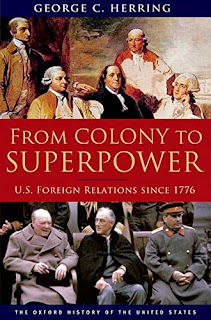The Bullet That Missed – Richard Osman
A recommendation from Soledad O’Brien, one of my favorite journalists who I follow on Twitter. Apparently author Richard Osman has about four or so books out that are quite popular. When I checked out his offerings at my local public library and noticed that the majority of his books were not available due to being checked out by others, I decided to try to sample what I have been missing. I have to say that although I enjoyed this offering, it wasn’t particularly overwhelming. It was quick read, but had I paid full price for it, I would have enjoyed it substantially less. Still, it had its charms.
This is a “light” comedy book. If focuses on several (mostly elderly) people living somewhere in England who are part of something called the “Thursday Murder Club”. This group of friends / acquaintances meet fairly regularly (Thursdays, I guess) and work on trying to solve unsolved murders. Now, before I go any further, let me again emphasize that this book is more of a comedy. If you have no sense of humor, don’t even bother picking this up. This is a book where you have to throw out every ounce of reality and believability to even remotely enjoy your reading journey. As long as you know where to set your expectations, you just might enjoy this book. Judging from a huge number of customer reviews on Amazon, it seems like there are masses of people that do.
Reading this book reminded me a bit (but only a bit) of the works of Kate Atkinson. Like Atkinson, these are “English” books, and they tend to focus more on character interaction than they do actual plot. The main difference for me is that Atkinson’s books tend to focus on the sewer of life and have a very crass approach to humanity as a whole (even though they can be quite humorous). This book, however, was much more positive and upbeat. People in this book generally seem to be happy, and characters do things like fall in love and the relationships seem to last. You’ll never find that in a Kate Atkinson book.
There are a lot of people within the pages, but the author does a good job with fleshing out his characters, so it’s pretty easy to keep the different individuals straight in one’s head. You laugh a lot at these people, and it’s nice when things are kept light. There’s one particular scene where one of the guys (somewhat old and grouchy) gets dragged by his girlfriend to get one of those “couples massages”. Sounds like a good thing, right? Well….maybe not “good” but at least it was “funny”.
There were other instances though that seemed a tad too ridiculous and unbelievable, even though this is supposed to be a comedy. We have one plot line where a septuagenarian couple gets kidnapped by a rather brutal captor. His demands are quite harsh, as one might expect. The story unfolds rather well and clever at first, but at some point it took a rather preposterous turn. You have to ask yourself, “Wait….what???” So even though we’re really not supposed to take this story too seriously, there is a limit as to how far the imagination is allowed to be stretched.
A book like this would make an excellent movie as long as it were cast properly and put in the hands of a strong director. A good director probably has a better imagination than I do, and I’m sure that he or she could take a lot of these silly scenes and make them much more easy to believe or at least digest. This was my biggest problem. Even though I consider myself to have a sense of humor, there were too many times where I don’t think I was tickled quite the way the author would have wished.
Still, it was overall very fun and a very quick read. Most of the chapters (91, I think) were only a couple of pages long, and when one doesn’t try to focus too much on details necessary for a “real” murder investigation, it moves at a satisfying pace. Having said that, I would recommend this book, but I can’t honestly say that I’m necessarily in a hurry to read any more of these “Thursday Murder Club” books.


